If you live in a cloudy, damp climate or have too much shade in your yard, your roses might catch powdery mildew. This fungus turns your rose leaves, buds, and flowers a fuzzy white. Powdery mildew doesn’t kill your rose, but it affects blooming and makes them deformed and wilty.
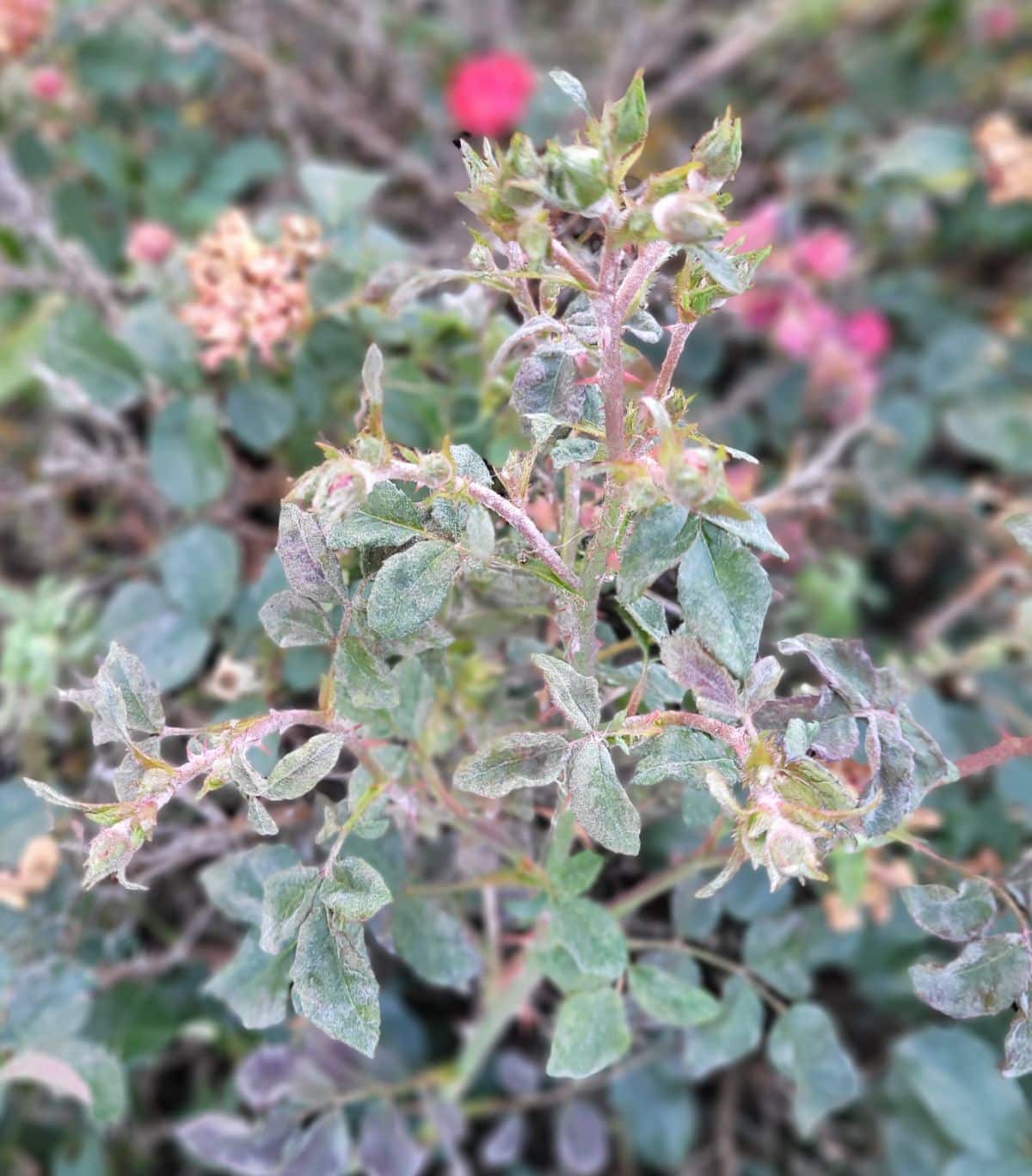
If powdery mildew is a problem, fear not! Here are 10 striking, vigorous roses that resist powdery mildew and other fungal diseases – and they’ll add sparkle to your garden.
Rose Care Tips to Stop Powdery Mildew
We cover all these tips more in-depth in our article. But here’s a quick overview.
- Water your roses weekly if you can, especially in summer. On hot days with scorching sun, treat your roses with an overhead shower. Oddly enough, powdery mildew actually thrives in hot, dry conditions – and it hates water on the leaves. Giving your roses overhead water on those days will cool off your roses and discourage powdery mildew. (Do this during the hottest part of the day so the water evaporates by night – in order to discourage blackspot!)
- Any time you see powdery mildew forming on any part of the rose plant, snip off the affected area, put it in a bag, and get it out of the garden. Spores will spread from those areas to your other roses. So, “nip it in the bud” to keep the disease contained.
- Plant your rose where it gets at least 6 hours of direct sun daily. Ultraviolet light kills powdery mildew spores. If your roses have powdery mildew, trim back trees and bushes to let more light in.
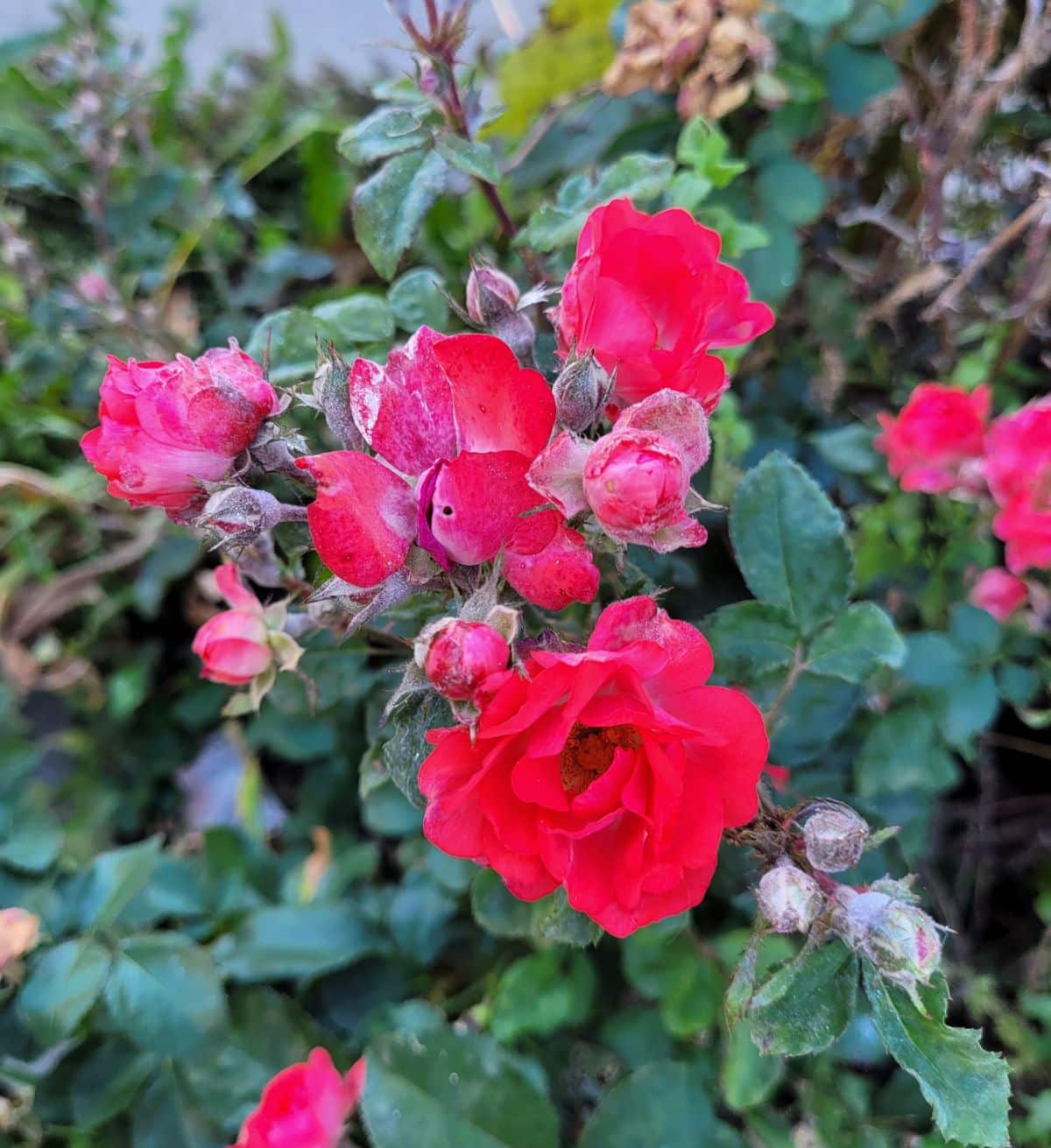
- Spray a natural fungicide every other week. Good choices are:
- sulfur-based (such as sulfur, Bordeaux, lime sulfur, etc.)
- Potassium bicarbonate
- Neem oil
- Spray an anti-transpirant (Wilt-Pruf or Bonide Wilt-Stop) in early spring once the foliage has opened up, then again when the luster fades from the leaf. Anti-transpirants stop water loss in your roses and create a barrier against powdery mildew and other fungal diseases. They also make your rose leaves shiny.
- Finally, choose resistant, tough-as-nails roses – like the ones in this article. Read on to meet a few new favorites you are going to love!
Rugosa roses and hybrids
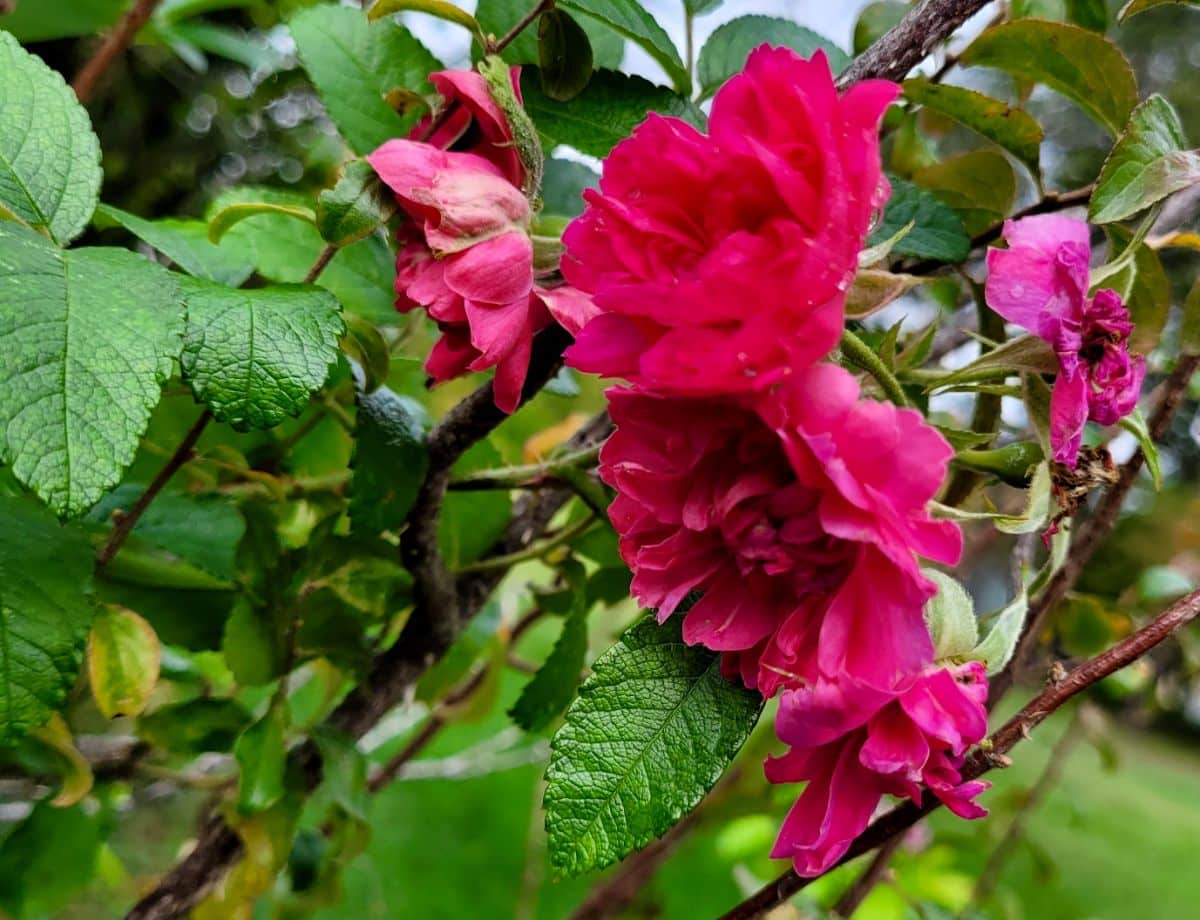
Rugosa roses, in general, are fairly disease-resistant. This is good because many of them hate being sprayed. They’re worse than cats. Spray almost anything on them, and the leaves turn yellow and fall off. So you can skip spraying fungicides on them – they generally won’t need it. In the event they catch powdery mildew, snip off the leaves.
Rugosas are ubiquitous along the New England coastline, sometimes called Sea Tomato, because the big, red, or orange hips they bear in fall look like small tomatoes. (Rugosa hips and other rose hips are healthy in tea and syrup, make a tasty jelly, and have a billion other uses.)
Rugosas are hardy as heck, can withstand salt spray, will grow where nothing else will and bear remarkably fragrant roses that will knock your socks off. A number of these bloom only once a year, but they put on quite a show when they do.
My three favorite rugosa roses, which I have personally grown, are:
Hansa (1905) – A vigorous shrub with magenta blossoms with a powerful clove fragrance. Bears red hips (though unreliable). Bird and pollinator-friendly. Makes an excellent fence or screen.
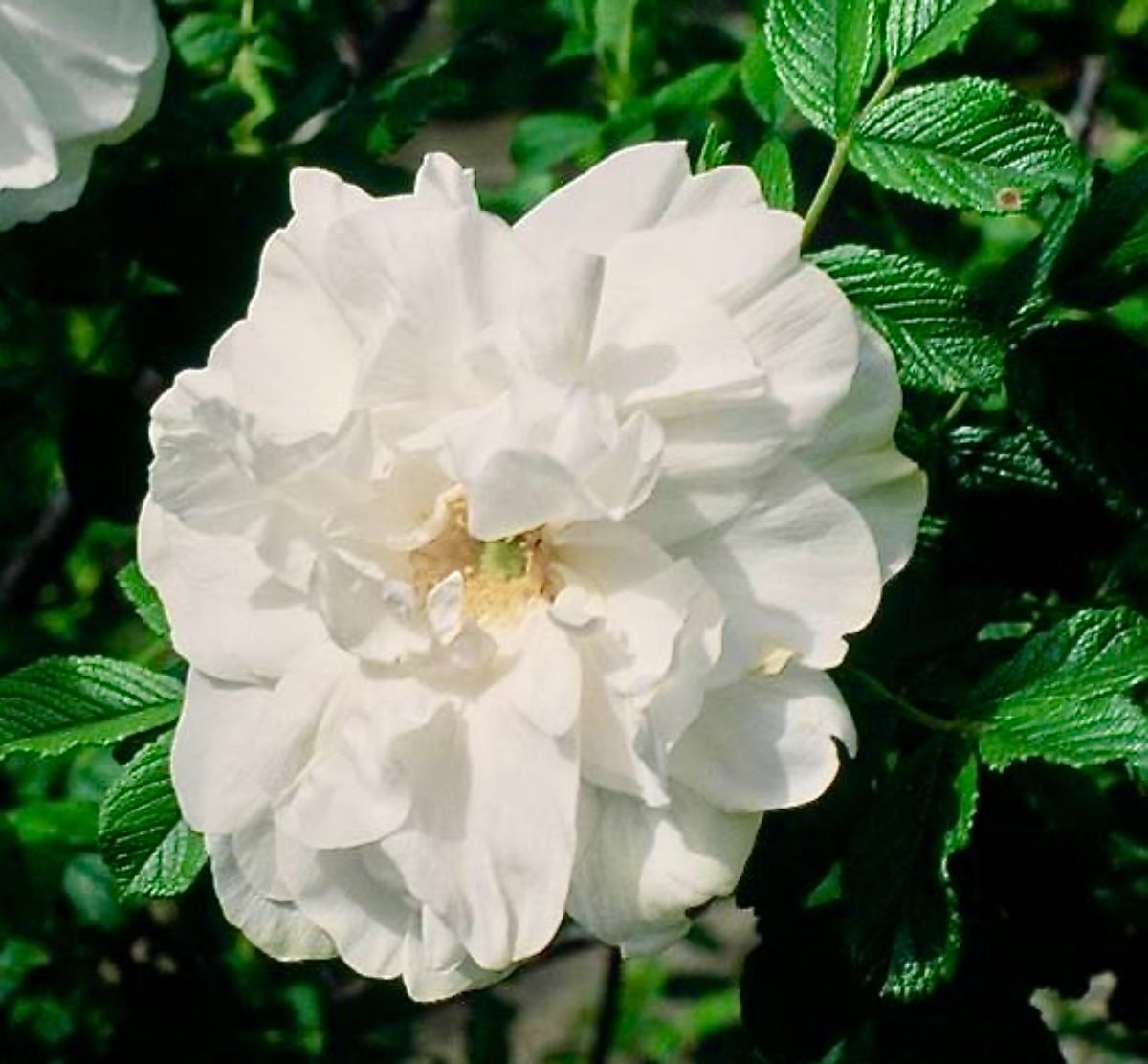
Blanc Double de Coubert (1892) – Semi-double, pure white flowers with a pretty golden boss in the center and delicious fragrance that the wind will carry to you. You can’t beat this rugosa rose. Blanc Double de Coubert bears hips. Blossoms can ball up in wet weather; remove these so they don’t catch botrytis.
Thérèse Bugnet (1941) – A tall hybrid rugosa with red canes that add color in winter. Thérèse Bugnet’s ruffled pink flowers are among the first to bloom in spring and release a sweet clove fragrance.
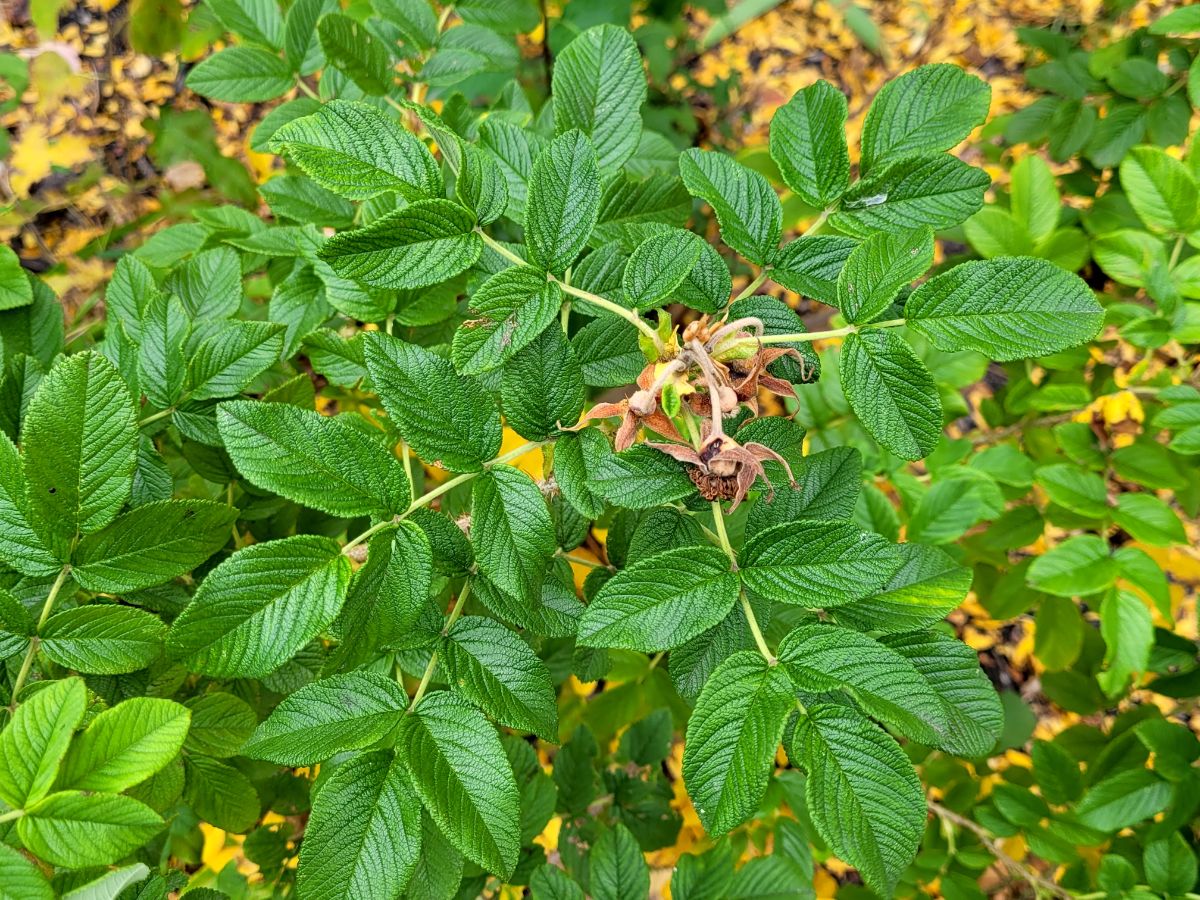
Rugosas and rugosa hybrid roses are strong choices for the rose garden or for anywhere around the yard where you want fragrance and color.
Note: Rugosas can be extremely invasive on the oceanfront – not just in New England, but in the Canadian Maritimes and the oceanfront all over Europe. Please choose a different plant for dune and oceanfront plantings.

New Dawn (1930) is an old hand at holding powdery mildew and many other diseases at bay. Do you know why this old rose is still growing? Because New Dawn is a tank.
Plant her next to a house, and she’ll grow over it and then pop out a half-million pretty white flowers. If she has a bad year and catches powdery mildew, she doesn’t care; she’ll just keep growing and blooming, and she outlives the powdery mildew. If there’s a bank robbery, plant her in front of the thief, and she’ll catch him. He’ll understand that crime doesn’t pay because she has some mean thorns!
Give New Dawn a lot of space so she can grow. If she’s squeezed into a little space, she’ll pop out like a jack-in-the-box.
Plant her over a trellis or arbor and use zip ties to hold her canes in place. (Zip them loosely so her canes have room to move.) If you have a nosy neighbor, put up a big, sturdy fence and let New Dawn sprawl across it. She’ll repel powdery mildew and blackspot while pouring out a profusion of fragrant, white roses.
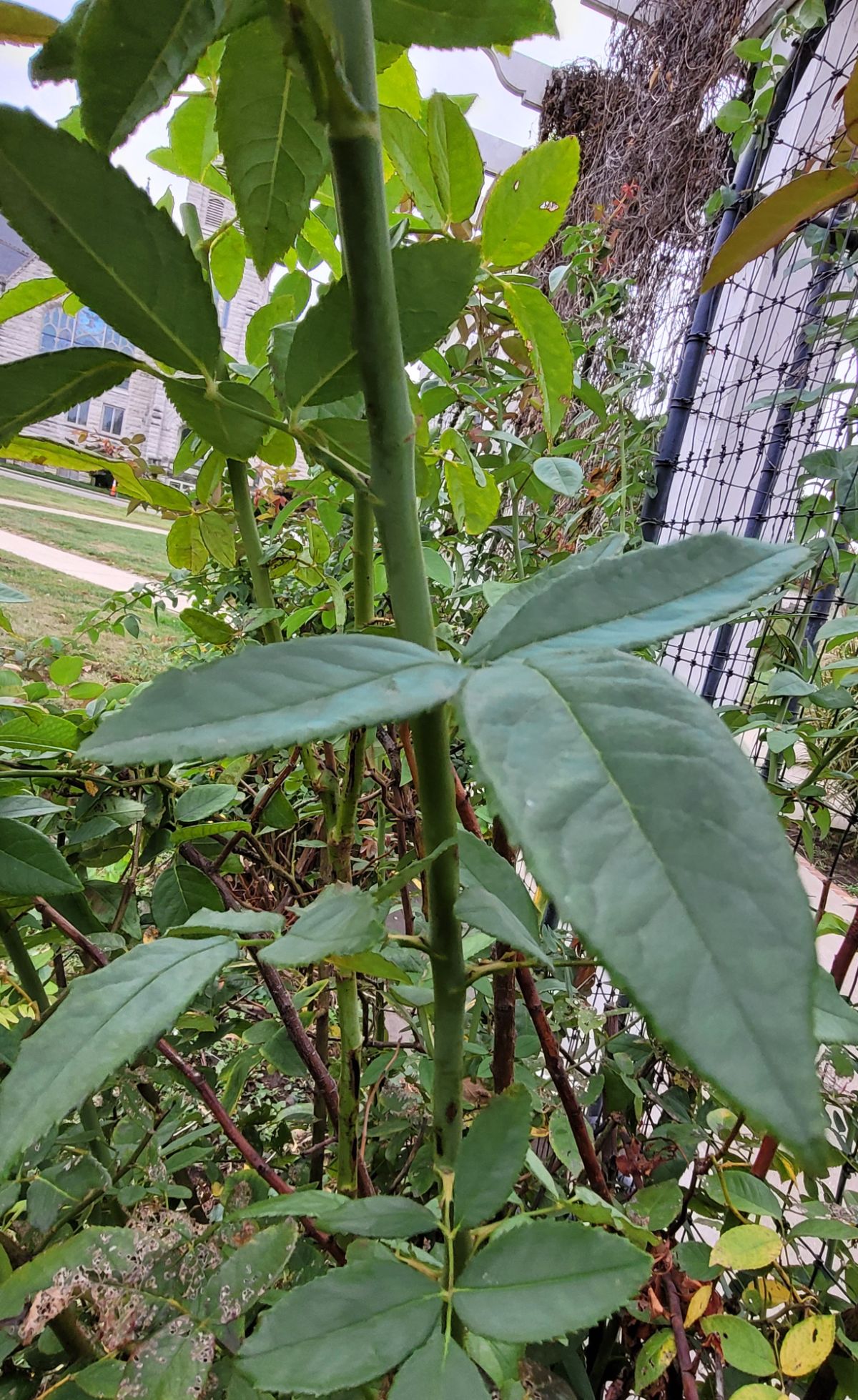
Zéphirine Drouhin (1868) is a Bourbon rose with all the characteristics of the class – romantic blooms packed with petals, a powerful fragrance, and an ability to laugh at powdery mildew and blackspot. She’s a well-behaved rose and a medium-sized climber, growing to about 10 to 15 feet tall.
And the best part? She’s a THORNLESS rose. The underside of Zéphirine Drouhin’s leaves will have a few small prickles, but her canes are wonderfully thornless and easy to handle. Zéphirine is also one of a few roses that can grow well in partial shade, though she does best in full sun – especially if you live in an area where powdery mildew is common.
Zéphirine Drouhin is a reblooming rose, unlike other Bourbon roses that bloom once a year. She’s among the earliest roses to start blooming and keeps going until after frost, though she’ll take a break in summer when temperatures soar over 90 degrees.
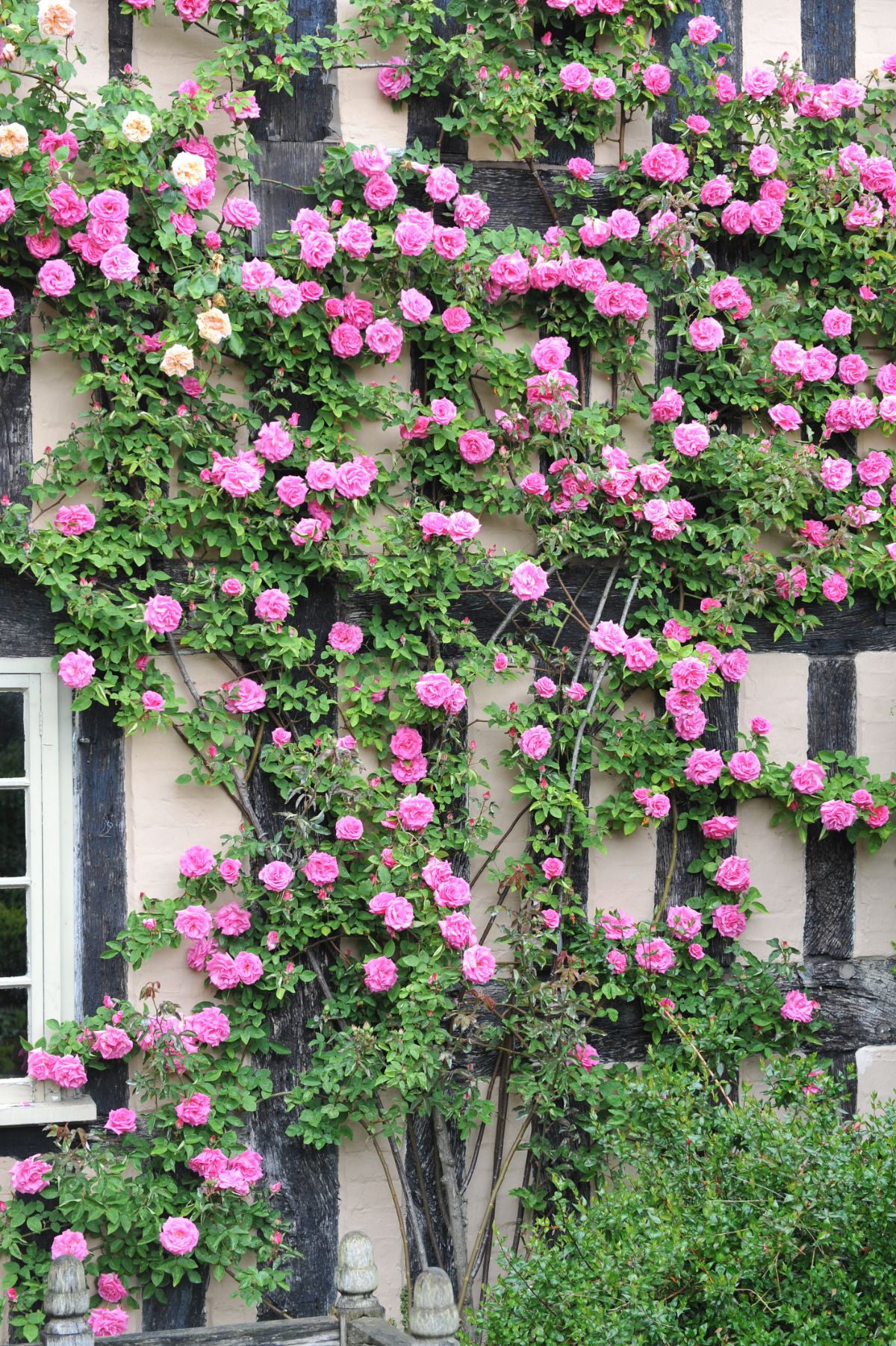
Zéphirine will cover herself with cherry-pink or dark rose blossoms that are filled with scent. She looks spectacular and smells wonderful. Your neighbors with the Knock Out roses will start reconsidering their choices when they see this rose.
This dandy little Bourbon rose is hardy to temperatures down to -20 degrees (zone 5 in the United States), so be sure to give her some extra mulch in the winter if temperatures get colder.
The David Austin rose website warns that Zéphirine Drouhin is prone to disease, so this might not be a good choice for folks in the United Kingdom. However, in the United States, she’s pretty dependable. She’s one of the roses I recommend.
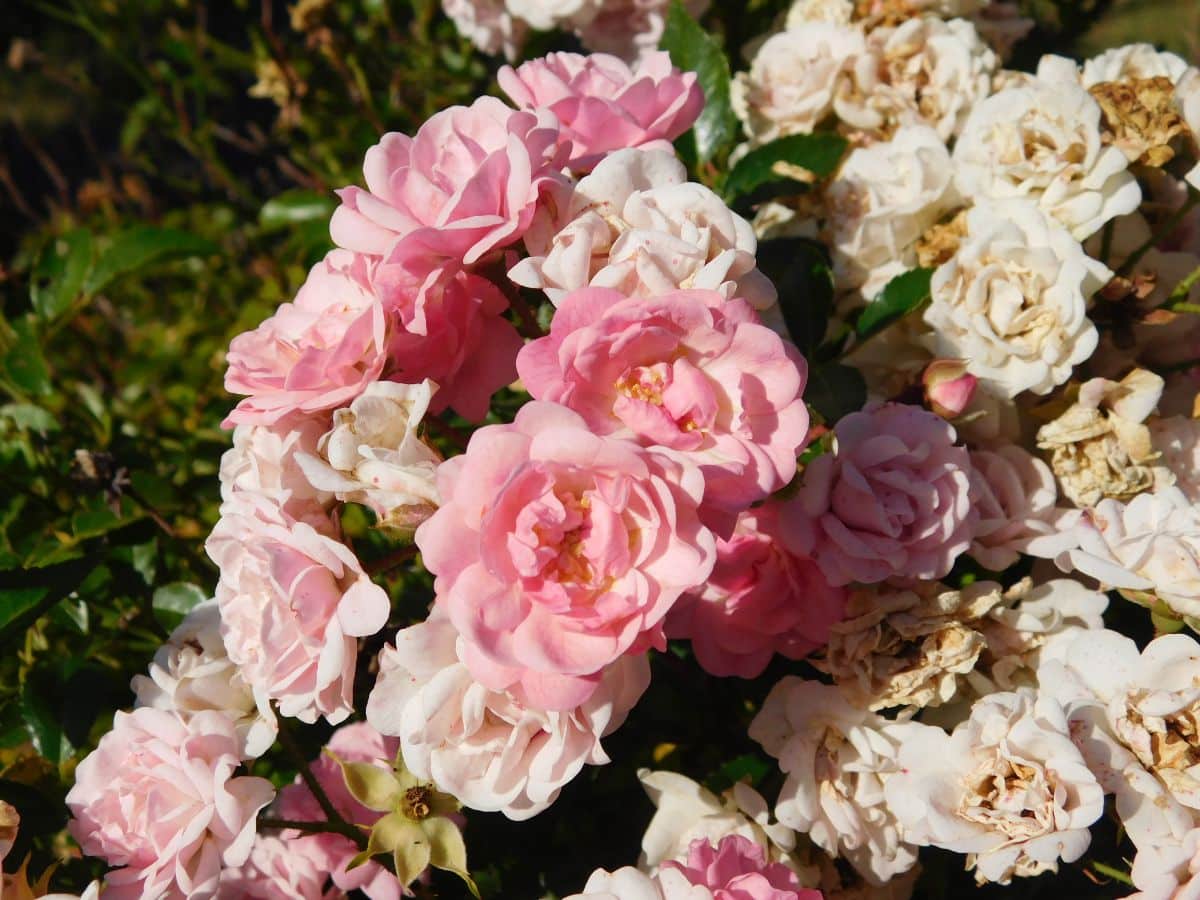
The Fairy (1932) is a dwarf shrub that was designated as an Earth-Kind rose by the Texas AgriLife Extension Service. Rose varieties that earned this designation showed how well it could survive neglect, drought, and disease while still performing exceptionally in the landscape.
The Fairy is a polyantha rose that produces huge clusters of dainty pink blossoms all summer that fade to white. The little pink flowers cover the plant with flushes of flowers. They grow about 2 to 3 feet tall and wide, and their glossy leaves have good resistance to powdery mildew and other fungal diseases like blackspot. The flowers on The Fairy don’t have much fragrance, but they attract butterflies and other pollinators.
Like actual fairies, these are beautiful – and have their share of little thorns that will snag you if you’re not careful. It’s a winner in any garden, long-lived, tough, and dazzling.
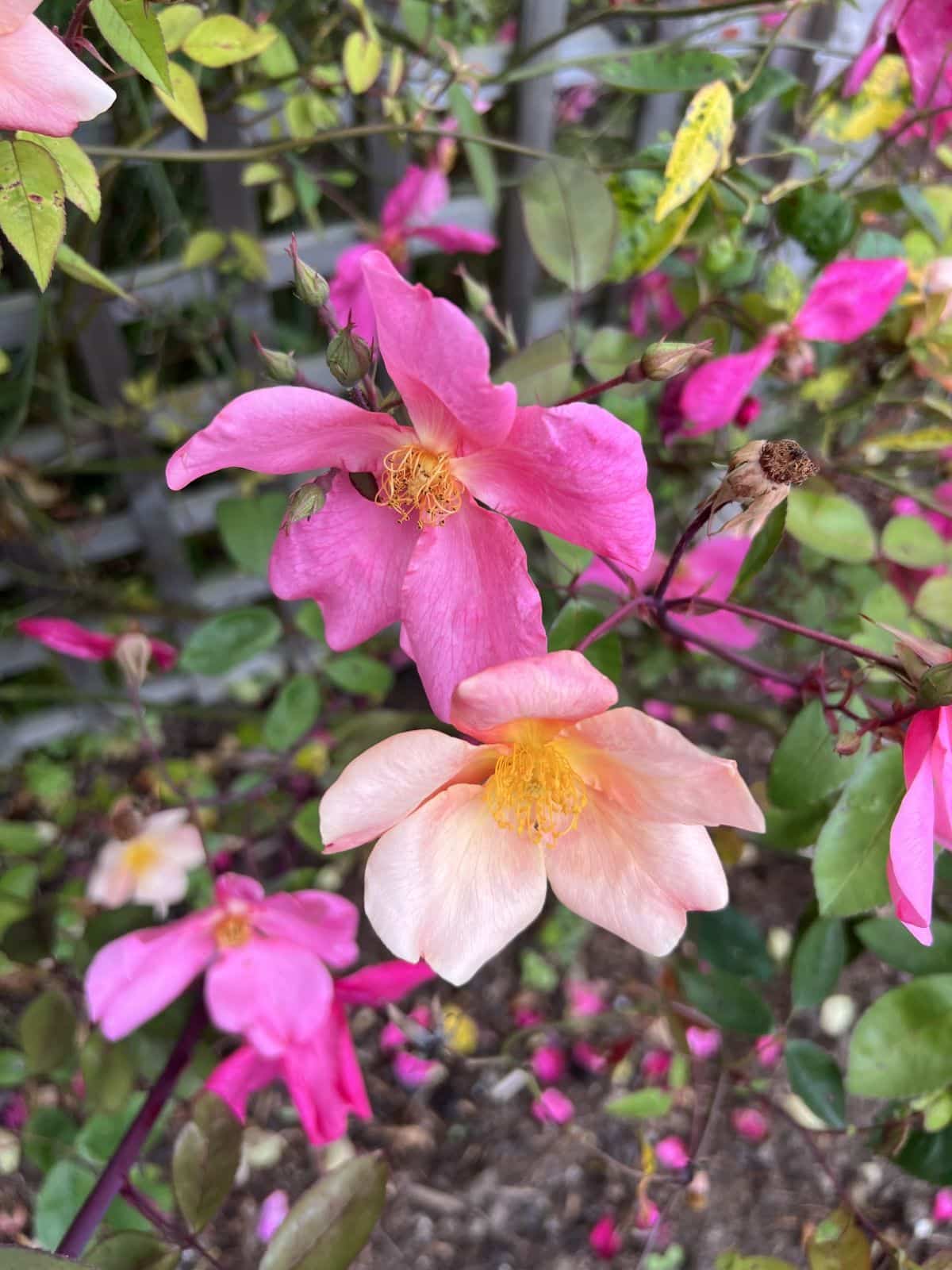
Mutabilis (before 1894) is a very unusual, eye-catching China rose. Often, roses will fade to a lighter color or to white as they age. Not Mutabilis.
When the blossoms open, they’re sulfur yellow. Then the petals turn orange, then pink, then scarlet. Sometimes, the petals on one flower will be different shades of color as they transition. What a show! It’s like having several different kinds of roses on one rosebush – a real feast for the eyes. With all the multicolored roses on it, Mutabilis looks as if it’s covered with butterflies, giving it the name “Butterfly Rose.”
This vigorous rose grows to 6 feet tall and wide and even larger, so give it plenty of space. It works well as a hedge or mass planting.
Mutabilis is easy to care for. The Texas AgriLife Extension Service has designated Mutabilis as an Earth-Kind rose, one that can survive neglect, disease, and heat and still come through looking great. Powdery mildew won’t be a problem for this rose.
It will need winter protection in zone 6 and north of there. Mulch it well and spray it with an anti-transpirant in late fall to help it overwinter.

Sea Foam (1964) is one of the first landscape roses, a vigorous plant with glossy foliage (glossy foliage seems to be good at repelling diseases like powdery mildew).
Hundreds of small white roses continuously cover the plant, blooming from early summer into fall. The blossoms seem to glow in the night garden.
Sea Foam is quick to get established if it’s planted where it gets at least 6 hours of full sun daily. It’s very winter hardy.
Instead of growing up, Sea Foam grows out, sending out creeping vines that cover the ground like the arms of an octopus.
This rambling rose can be grown as a ground cover or hedge, as well as a short climbing rose. Wrap Sea Foam around pillars, up trellises, and along fences.
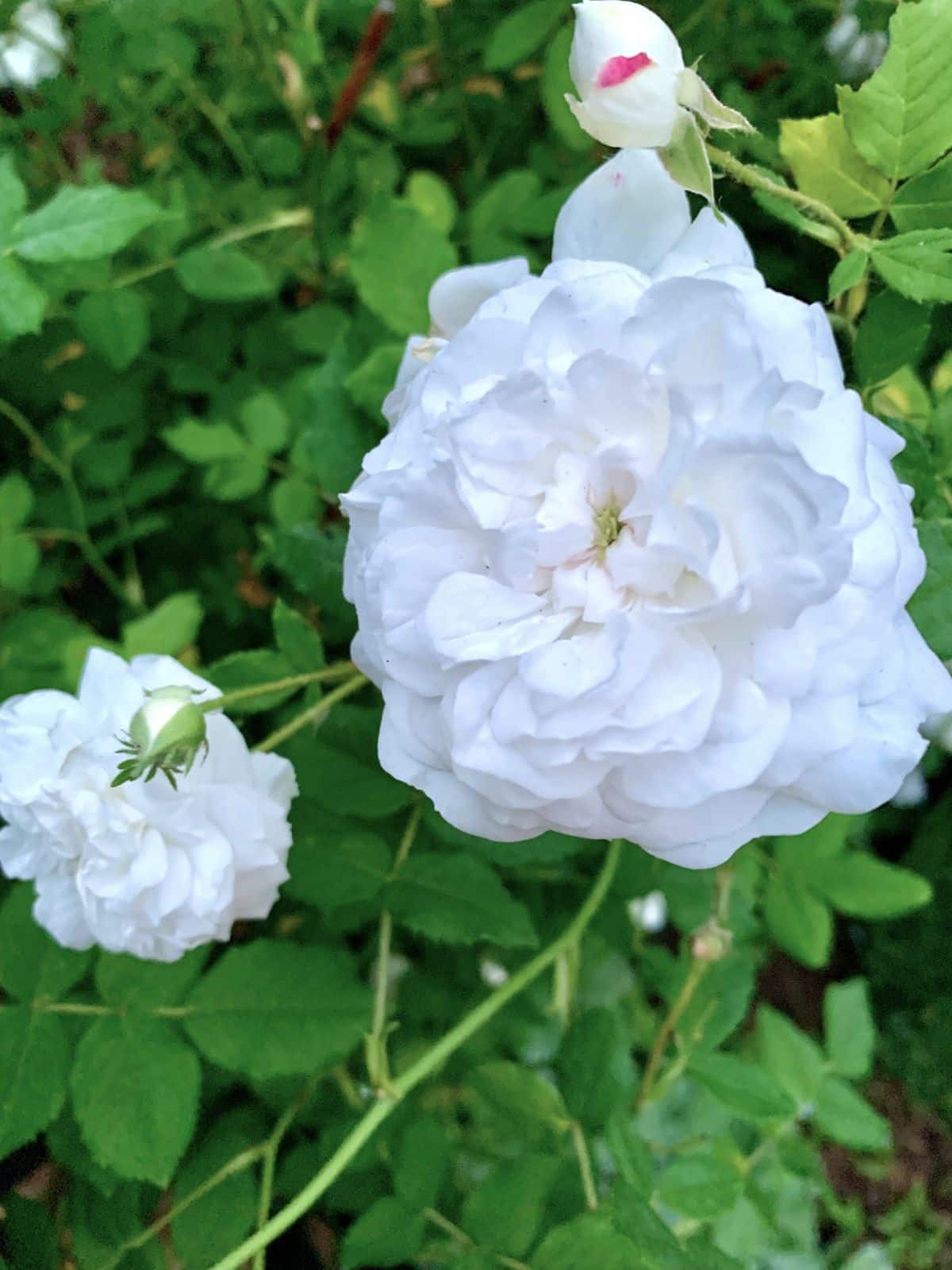
Madame Hardy, aka Félicité Hardy (1831), is considered to be one of the most distinctively gorgeous white roses on the face of the earth. It’s considered a Damask rose, one of the oldest rose groups in the world.
The American Rose Society gave Madame Hardy an “outstanding” rating, and no wonder. Madame Hardy bears her white blossoms in sprays, and sometimes, the petals are touched with shell pink. In the center of this full, round rose blossom is a little green button eye. And its fragrance is intoxicating, a classic rose scent that will perfume your garden.
What’s more, this old rose is disease-resistant and blocks powdery mildew, black spot, and rust. She’ll scramble up a pillar if you let her, and she’s hardy and shade-tolerant.
Even though Madame Hardy blooms once a year, and even though she’s armed with thorns, she’s still greatly beloved by gardeners and rosarians and is a member of the Old Rose Hall of Fame.
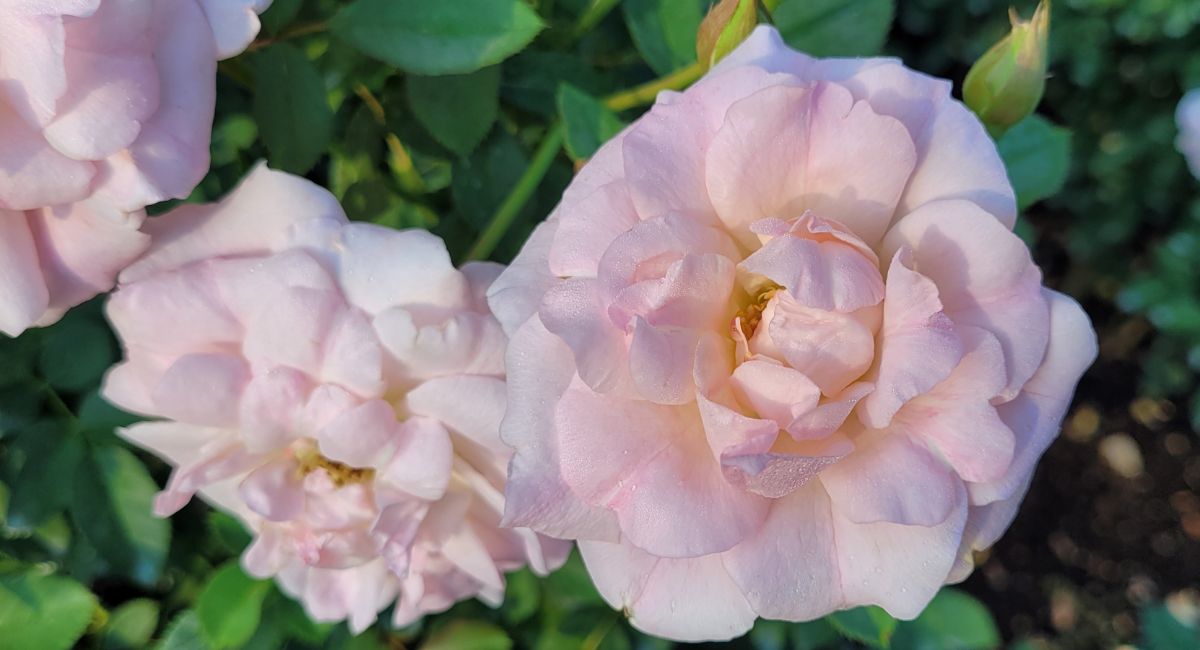
Morden Blush (1976) is a compact shrub rose from the Parkland Series. These are Canadian-bred roses developed from tough-as-nails prairie roses native to North America.
If grown in full sun well out of reach of tree roots, Morden Blush is a vigorous, disease-resistant rose. Starting in late spring, it will deliver with continuous flushes of pinkish-peach flowers, absolutely covering itself with blooms. It’s a showstopper of a rosebush.
Powdery mildew and blackspot will leave this disease-resistant rose alone. It’s also hardy to zone 3a for our northern climates. Morden Blush will freeze to the ground, but then it comes back strong after a severe winter year after year.
They will still bloom in part shade, but the rosebush looks a little skinny, and the flowers aren’t as floriferous – so keep them in the sun.
The only place where Morden Blush doesn’t deliver is with fragrance. Well, we can’t all be perfect.

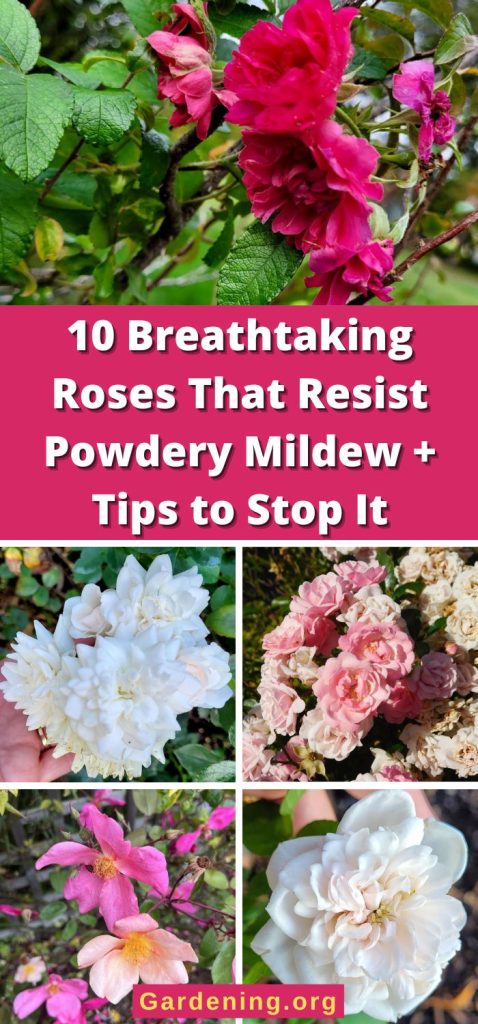
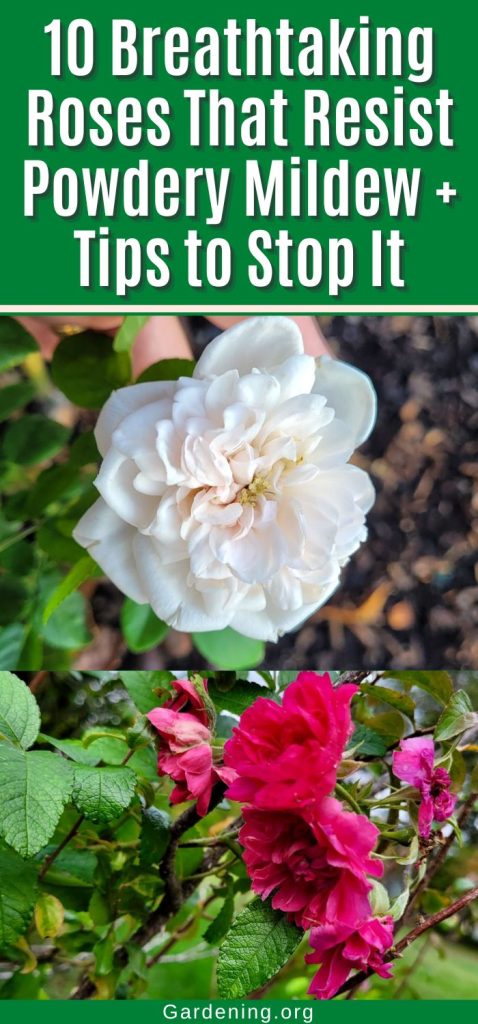
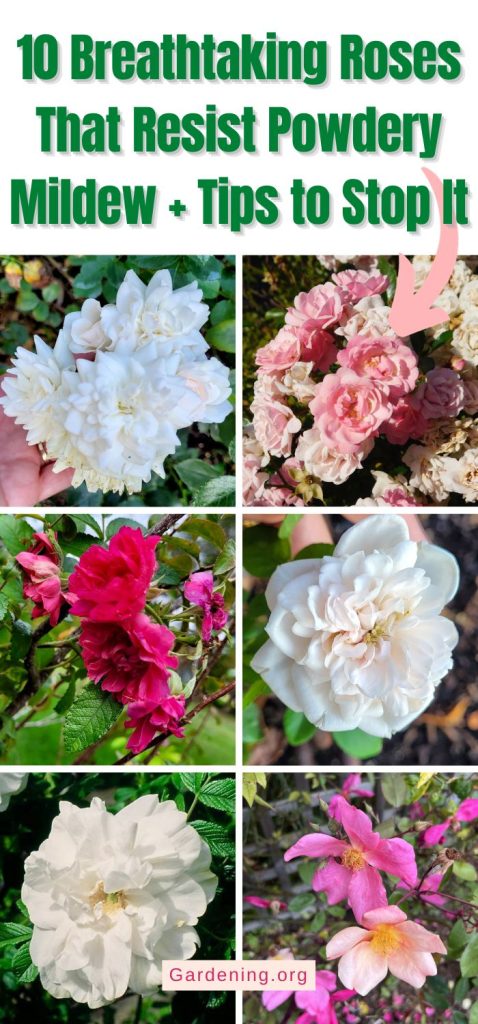
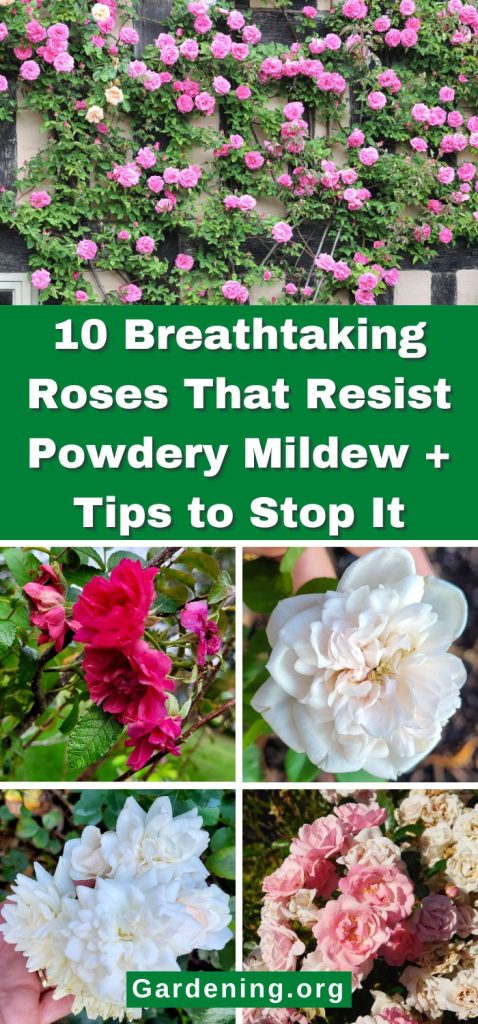

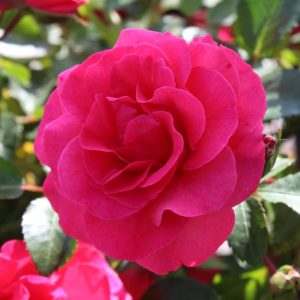
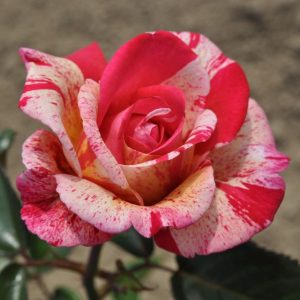

Leave a Reply